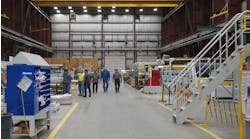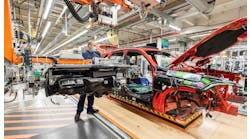Asian nations must act quickly to protect their cities from flooding and other natural disasters as rapid urbanization raises environmental risks, the Asian Development Bank said Wednesday.
Major investment in infrastructure and smarter urban planning -- focused on green growth -- are the only routes to curbing the impact of such catastrophes as the region's metropolises expand, an ADB report said.
"Asia has seen unprecedented urban population growth, but this has been accompanied by immense stress on the environment," said ADB chief economist Changyong Rhee.
"The (urbanization) trend will continue at an enormously fast speed... Asian cities have very little time to prepare and build proper infrastructure."
Deadly floods which submerged 80% of Manila last week, the deluge that killed dozens in the Chinese capital in July and the inundation of parts of Bangkok last year were warning signs that major Asian cities cannot cope with the challenges of climate change and protect their populations, the ADB said.
The situation is likely to worsen, the poverty-fighting bank warned, as Asian economies grow and hundreds of millions of people flock to "megacities" with populations of 10 million or more.
Asia's cities lured more than a billion new residents between 1980 and 2010 and will draw a billion more by 2040, according to ADB research, with more than half of the world's megacities located in the region.
As a result soaring pollution, crime, social inequality and slum living are heaping pressure on existing infrastructure, hastening the need for bold responses from city authorities, the Manila-based organization said.
Asia has "spent lots of money on infrastructure, but that's not enough to protect people", Rhee said.
"We focus on quantity... but do not have the luxury to spend money on quality," he added, citing the building of roads without adequate drainage as an example of flawed development.
The report said policy-makers could narrow that gap by introducing congestion charging, carbon levies and collecting more taxes to invest in green infrastructure including public transport.
It also expressed hope the region would take advantage of new technologies which could lead to greener cities that mitigate the impact of climate change.
Copyright Agence France-Presse 2012



